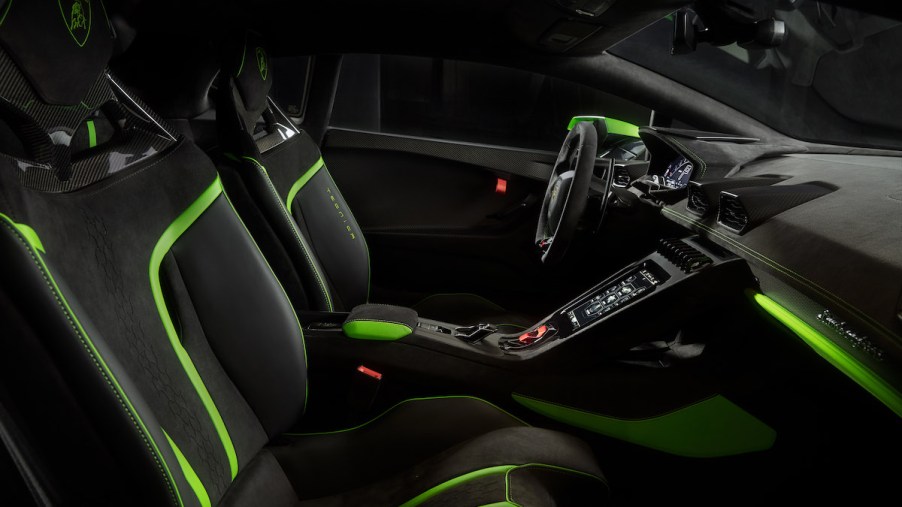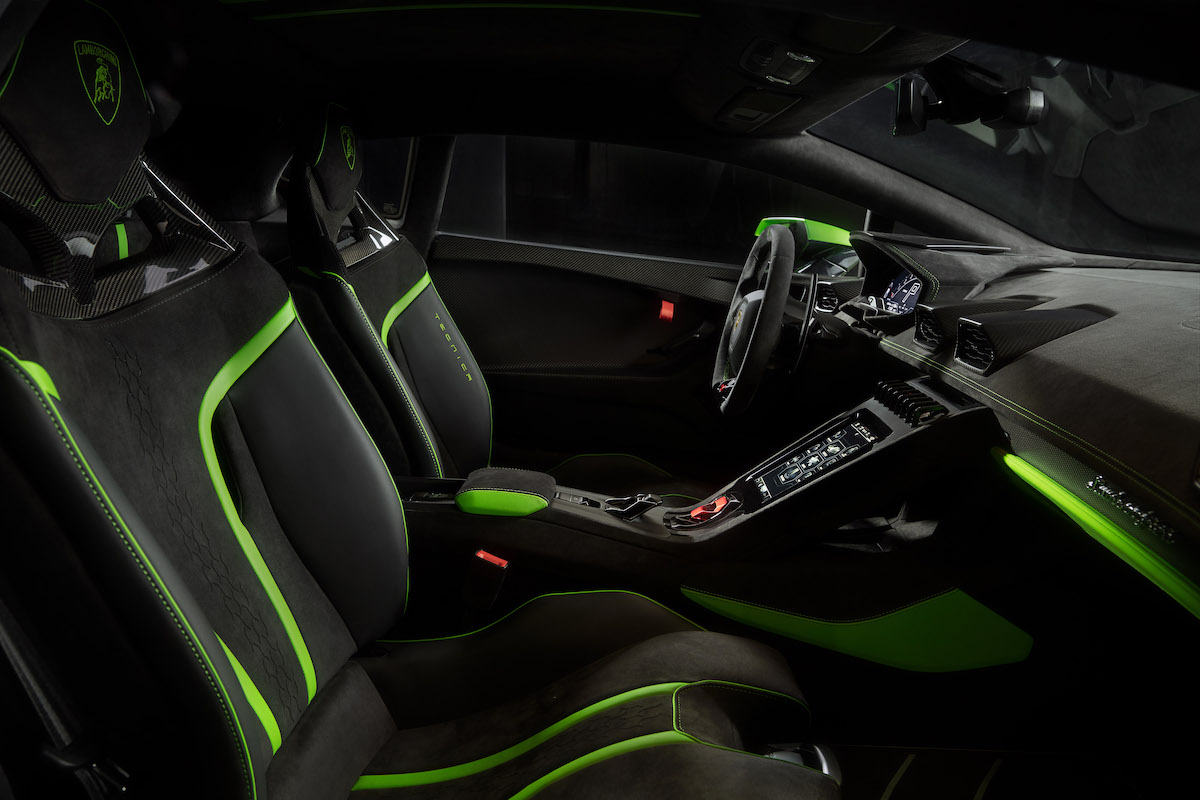
Alcantara vs. Dinamica: Which Is the Better Car Seat Material?
Consumers love luxury cars thanks to their performance, opulence, and comfort. High-end vehicles especially stand out for their sumptuous interiors made with high-quality materials. And two popular materials in luxury cars are Alcantara and Dinamica. This comparison shows why the two compete for the best car seat fabric.
What is the difference between Dinamica and Alcantara?

Alcantara is considered one of the most luxurious car seat materials. According to Car and Driver, the fabric was developed in the 1970s. Akin to microfiber, Alcantara has the properties of real suede. Carmakers such as BMW, Ferrari, Maserati, and Alfa Romeo offer the material in their vehicles.
The company Alcantara describes its namesake as “a unique and innovative covering material, the result of unique and proprietary technology. It offers an extraordinary combination of sensory, aesthetic, and functional value, and an ethical and social awareness that characterizes a contemporary lifestyle.”
Drivers who prefer sportier cars appreciate Alcantara thanks to its grippy material on seats and the steering wheel.
On the other hand, Dinamica debuted in car interiors in 1997, two decades after Alcantara. The maker of Dinamica, Miko, describes its product as “a microfiber which resembles suede and is obtained through an innovative process for recycling polyester … a water-based polyurethane bath without the use of organic solvents.”
You can find Dinamica in Land Rover, Mercedes-Benz, Volvo, Ford, Dodge, Jeep, and Renault models.
Neither Alcantara nor Dinamica is objectively better than the other. Both are soft, grippy microsuedes made in Italy. Both are used on car seats, door panels, steering wheels, dashboards, and headliners. However, according to TheHogRing.com, Dinamica is slightly thicker and cheaper than Alcantara.
But both Alcantara and Dinamica are synthetic materials advertised as more eco-friendly for car interiors than genuine suede. However, certain “green” claims recently landed the two companies in an Italian courtroom.
The makers of Alcantara and Dinamica went to court
Many people love the feel of genuine suede but dislike that it uses animal hides. Consumers’ heightened awareness of animal cruelty has opened the market for luxury carmakers to use alternatives to leather and suede. That’s where Alcantara and Dinamica come in. They’re both synthetic suede-like materials that feel like genuine suede but are vegan. Both companies tout their products as a more eco-friendly choice.
Miko advertises that Dinamica is “friendly to the environment.” The company also says it’s “the first and only microfiber that guarantees eco-friendly sustainability throughout the production cycle.” Those statements led Alcantara to file a lawsuit against Miko.
Alcantara alleged Miko’s claims were misleading, and an Italian court agreed. The ruling says Miko inaccurately advertised that Dinamica is a “greener” choice and that it’s 100% recyclable. The truth is that it has not achieved 100% recyclability.
Due to the ruling, Miko must stop making “green” claims about Dinamica, Car and Driver reported. In addition, the company must correct statements made through media outlets and publish the court’s verdict on the product’s homepage.
What is the difference between genuine suede and synthetic suede?
There are plenty of benefits to using Alcantara and Dinamica over genuine suede. One of the most significant advantages is that synthetic materials are more sustainable and animal-friendly than genuine suede. Plus, synthetic microsuede is durable and stain-resistant. It also doesn’t get as hot in the sun and is easier to clean than real suede.
The downside to synthetic suede is it’s more expensive than animal suede. In addition, despite its stain resistance, synthetic suede “can wear quite noticeably … on areas that are touched and handled frequently” because of oils from your hands and dirt from your clothes, Carwow explains. New synthetic suede “has a soft, slightly fluffy look and feel — technically known as ‘nap’ — but over time it can become flat and lose its softness.” But worn-out material “loses much of its visual appeal and can feel hard and grainy or greasy to the touch.”
Genuine suede also has pros and cons. The material has been the standard for luxury and opulence. It feels smooth and soft and can hold up for years if well-maintained. In addition, it can be replaced and repaired easily, and it’s versatile.
However, animal suede requires a high level of maintenance to remain in good condition. When not well-maintained, genuine suede can develop cracks and signs of wear when exposed to repeated use and UV rays. And, of course, traditional suede contributes to animal cruelty.


